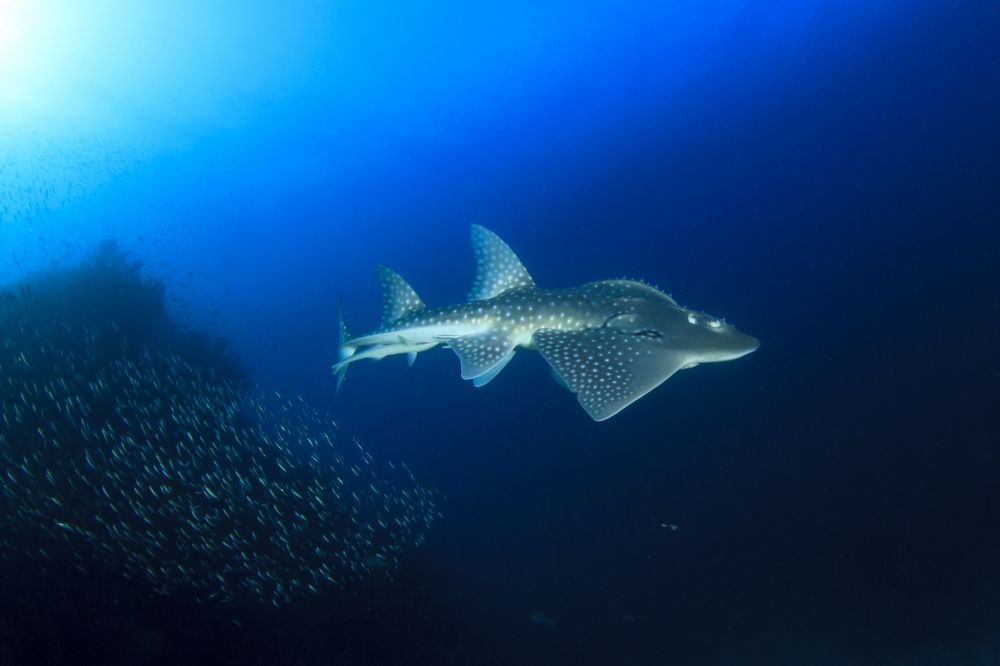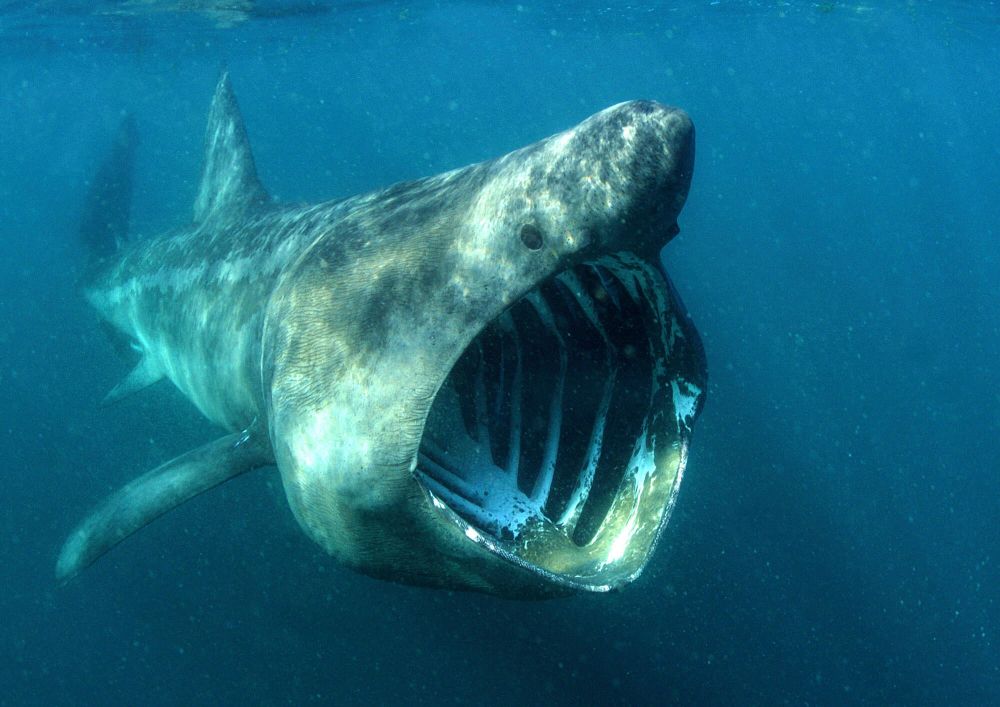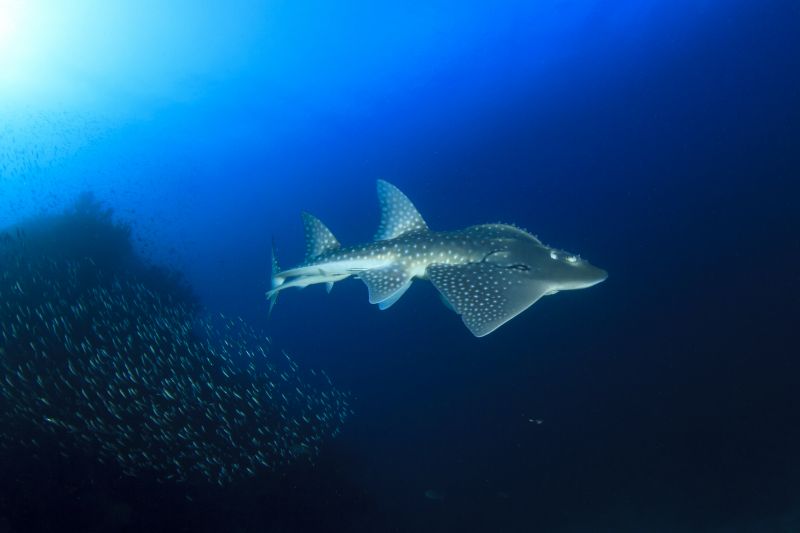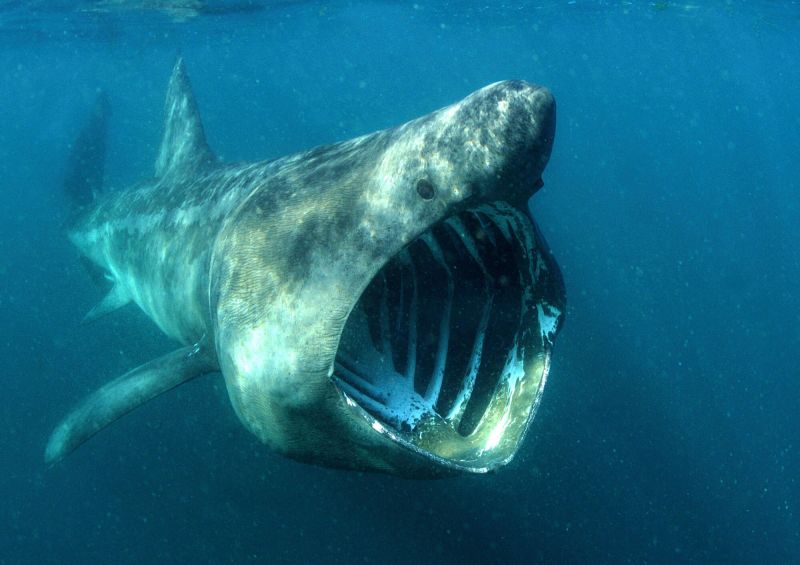


SARRI focuses on the most highly threatened marine shark and ray species globally - those that are Endangered or Critically Endangered according to the IUCN Red List of Threatened SpeciesTM.
Experts narrowed this pool of over 200 species to around 140 for which the SARRI approach of protecting critical habitat through shark recovery zones – as an integral component of a recovery plan – was thought to be most suitable.
Species that have relatively higher reproductive rates, lower dispersal distances, and appear to still have viable populations in some localities were more likely to be included.
Species and species groups that were selected and will be the focus of SARRI include:
Species that primarily migrate large distances and do not appear to aggregate along with those in deep waters were excluded during our species selection process, as protecting critical habitats is less likely to be an effective way of facilitating a recovery.
Species endemic to developed countries, or those that are very rare in any country where they still occur according to the available information were also not considered.
Endemics from developed countries were excluded as these countries should have the resources and expertise to undertake successful recoveries without SARRI’s support. Those with very low populations may require translocation of individuals and captive breeding, which is beyond the scope of SARRI.

SARRI focuses on the most highly threatened marine shark and ray species globally - those that are Endangered or Critically Endangered according to the IUCN Red List of Threatened SpeciesTM.
Experts narrowed this pool of over 200 species to around 140 for which the SARRI approach of protecting critical habitat through shark recovery zones – as an integral component of a recovery plan – was thought to be most suitable.

Species that have relatively higher reproductive rates, lower dispersal distances, and appear to still have viable populations in some localities were more likely to be included.
Species and species groups that were selected and will be the focus of SARRI include:

Species that primarily migrate large distances and do not appear to aggregate along with those in deep waters were excluded during our species selection process, as protecting critical habitats is less likely to be an effective way of facilitating a recovery.
Species endemic to developed countries, or those that are very rare in any country where they still occur according to the available information were also not considered.
Endemics from developed countries were excluded as these countries should have the resources and expertise to undertake successful recoveries without SARRI’s support. Those with very low populations may require translocation of individuals and captive breeding, which is beyond the scope of SARRI.




SARRI will undertake recoveries of focal species in 8-10 sites found in the developing world, where we will fine-tune the SARRI approach, while taking advantage of established teams already working on the ground on sharks and rays.
Ultimately, the aim is to have a portfolio of sites with a good variety of species and localities in order to test and refine the SARRI approach across a range of scenarios, but also to benefit the most species.

Using the list of priority species as a starting point, sites - where viable populations are known to still exist, and particularly if multiple focal species are present - will be selected for more detailed analysis. We will not look to duplicate efforts in areas where projects to conserve priority species are already underway, making our SARRI Toolkit available instead to support the existing efforts.

For species that still occur in good numbers in multiple locations, the presence of aggregation sites, and a favourable socio-economic and political environment will be important factors for prioritizing sites. Examples of the latter include whether the focal species is protected from exploitation, whether critical habitats are protected, where coastal communities and authorities are open to collaborate, and where concrete opportunities have been identified for communities to participate in recovery plans and benefit from them.


SARRI will undertake recoveries of focal species in 8-10 sites found in the developing world, where we will fine-tune the SARRI approach, while taking advantage of established teams already working on the ground on sharks and rays.
Ultimately, the aim is to have a portfolio of sites with a good variety of species and localities in order to test and refine the SARRI approach across a range of scenarios, but also to benefit the most species.


Using the list of priority species as a starting point, sites - where viable populations are known to still exist, and particularly if multiple focal species are present - will be selected for more detailed analysis. We will not look to duplicate efforts in areas where projects to conserve priority species are already underway, making our SARRI Toolkit available instead to support the existing efforts.


For species that still occur in good numbers in multiple locations, the presence of aggregation sites, and a favourable socio-economic and political environment will be important factors for prioritizing sites. Examples of the latter include whether the focal species is protected from exploitation, whether critical habitats are protected, where coastal communities and authorities are open to collaborate, and where concrete opportunities have been identified for communities to participate in recovery plans and benefit from them.




Coastal communities living adjacent to recovery sites are among the most important stakeholders for any recovery effort. While some shark and ray recovery zones may be in sparsely inhabited areas or far offshore, most will likely be within the fishing grounds of coastal communities.
These communities may have vital information on where critical habitats are found, cultural values associated with the animals, and may have derived income and food from catching them.
Securing the strong support of communities and their stewardship of recovery efforts will ultimately dictate whether recovery efforts are successful.

Seeking free prior, informed consent from communities, understanding their needs and co-designing benefits linked to recovery efforts will be critical for every shark recovery zone, and will take place early in the project.
This involvement will continue through to the development and execution of recovery plans. In the long term, once SARRI exits from each project site, communities – alongside relevant authorities – will remain the most important custodians for ensuring recoveries continue and do not reverse.

SARRI will employ a safeguarding process to prevent and mitigate potential negative effects of conservation programs. The process will evaluate risk and ensure communication, feedback and transparency.


Coastal communities living adjacent to recovery sites are among the most important stakeholders for any recovery effort. While some shark and ray recovery zones may be in sparsely inhabited areas or far offshore, most will likely be within the fishing grounds of coastal communities.
These communities may have vital information on where critical habitats are found, cultural values associated with the animals, and may have derived income and food from catching them.
Securing the strong support of communities and their stewardship of recovery efforts will ultimately dictate whether recovery efforts are successful.


Seeking free prior, informed consent from communities, understanding their needs and co-designing benefits linked to recovery efforts will be critical for every shark recovery zone, and will take place early in the project.
This involvement will continue through to the development and execution of recovery plans. In the long term, once SARRI exits from each project site, communities – alongside relevant authorities – will remain the most important custodians for ensuring recoveries continue and do not reverse.


SARRI will employ a safeguarding process to prevent and mitigate potential negative effects of conservation programs. The process will evaluate risk and ensure communication, feedback and transparency.
The Shark and Ray Recovery Initiative (SARRI) is our latest response to save sharks and rays from extinction. Past successful recoveries show that these animals can be brought back from the brink. Follow us on this urgent recovery mission.
Already registered?
Not registered already?
Thank you for registering but an account already exists for the email address you provided.
Thank you! A magic login link has been sent to the email address provided. Please use it within 15 minutes.
You are currently logged in
Sorry but no account was found for that email address.
© 2024 SARRI
All rights reserved.
Website by Roojai